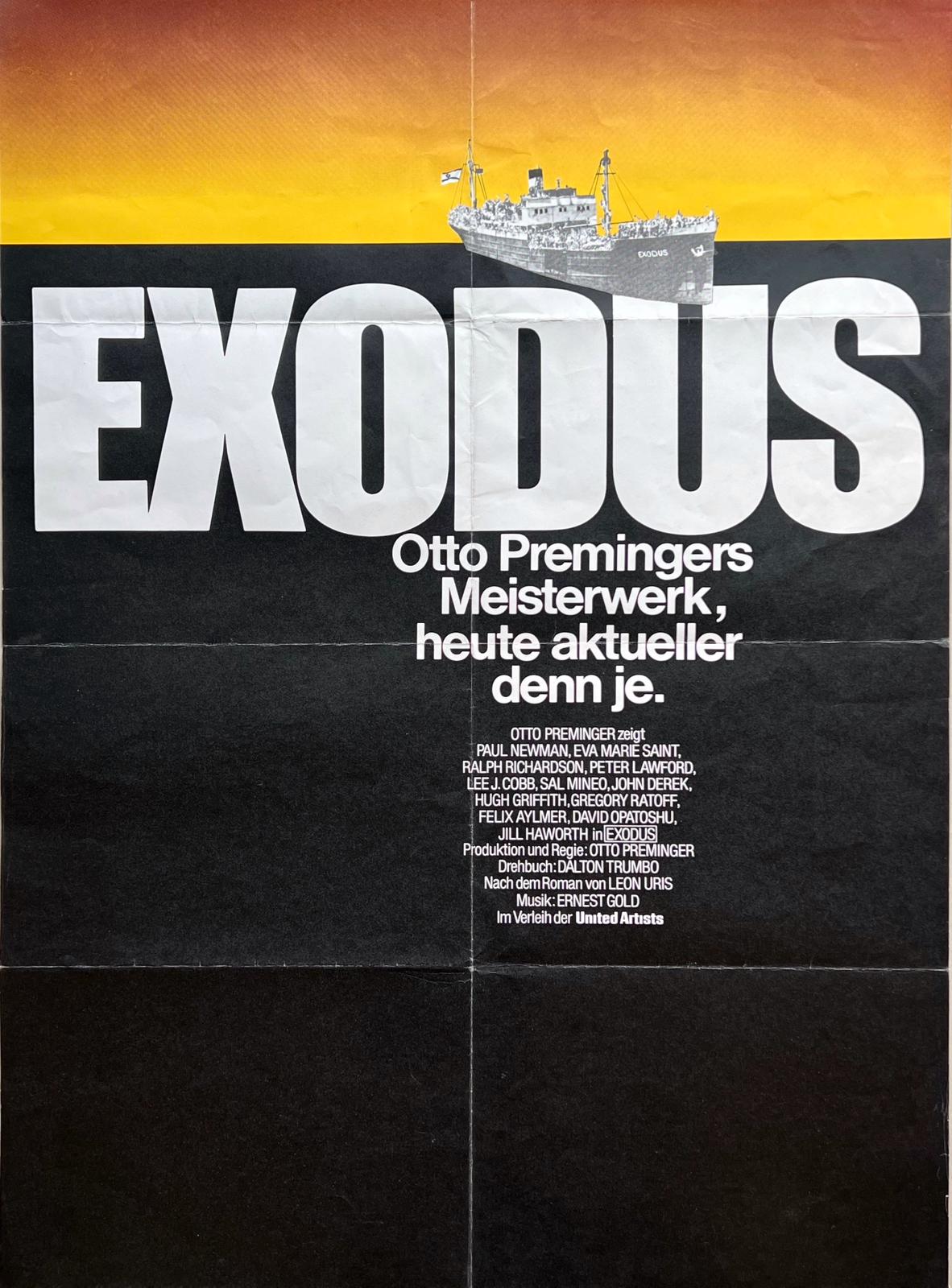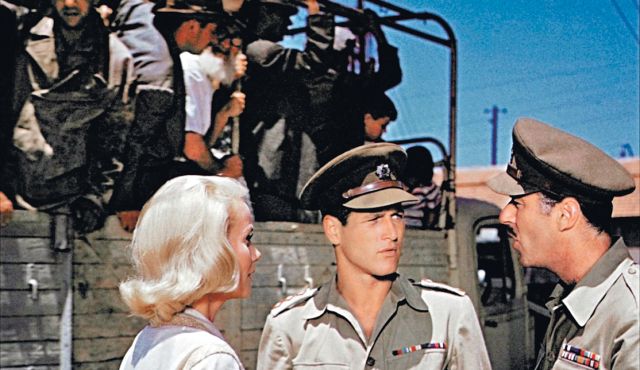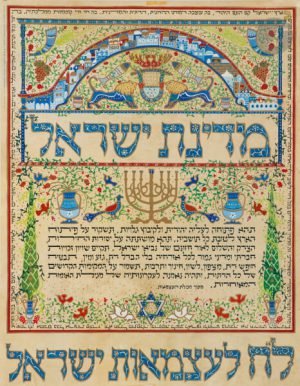Shop
Exodus Vintage Movie Poster (1960) Directed by Otto Preminger
$1,700.00
1 in stock
Description
printed in Italy
Invasion The German army invaded France on 10 May 1940. On 22 June 1940, the French surrendered and signed an armistice with the Nazis. France was then divided in two zones. Northern France was occupied and controlled by Germany. The unoccupied southern zone came under the control of a new French Government led by Marshal Philippe Petain, a World War I hero. Established in the spa town of Vichy, the government and area became known as the Vichy France. General Charles de Gaulle, who opposed Petain’s surrender to the Germans, fled to Great Britain and set up a French Government-in-exile. Many other Frenchmen who wanted to free France from the Germans also supported de Gaulle and fought with the British. Anti-Jewish laws In the summer of 1940, 350,000 Jews were living in France. More than half the Jewish population were not French citizens. Many were Jews who had emmigrated to France from easten Europe after World War I. In addition, many more were Jewish refugees fleeing antisemitism within Nazi Germany and other areas occupied by the Nazis. Almost immediately after the German invasion, Jews living in the occupied zone, and in Vichy France, were subjected to various anti-Jewish measures. In the controlled zone, Jews were dismissed from their jobs and their freedom of movement was restricted. Many Jews were arrested. Collaboration The Vichy Government began to persecute Jews. In October 1940, they passed a set of anti-Jewish laws, defining who was a Jew and limiting their involvement in French society. In March 1941 the Vichy authorities, under pressure from the Germans, set up an Office for Jewish Affairs. Jewish property and businesses were confiscated under Aryanisation laws. Initially, the Vichy Government’s anti-Jewish measures were directed against Jews who were of non-French citizensip. Many thousands were sent to forced labour camps or imprisoned. However, at the end of April 1942, Pierre Laval joined the Vichy Government as prime minister. Laval said Vichy should collaborate fully with the Nazis. From then on the Vichy regime began to persecute all Jews, irrespective of their citizenship. Deportations In June 1942, the Germans forced the Jews in the occupied zone to wear the Star of David. Throughout the summer of 1942, they arrested Jews for deportation, and restricted the movements of the remaining community. These ‘roundups’ were usually carried by French police who collaborated with the Nazis. In one aktion which took place in Paris on 16-17 July 1942, 12,000 were rounded up. Around 7,000 of them were crammed into the Velodrome d’Hiver sports stadium for several days; with no food, water, or sanitation. Many thousands more Jews were sent by cattle car to Drancy transit camp in a suburb of Paris. From there they were deported to the east. The Vichy authorities also arrested and deported Jews from their zone. During the war approximately 80,000 Jews were deported from France. Of these, 70,000 were sent to Auschwitz. The remainder were sent to Majdanek, Sobibor and Buchenwald. By the end of the war just 2,000 of those who were deported had survived.
Additional Information
| Artist / Creator | |
|---|---|
| Technique | |
| Condition | |
| Size | |
| Year | |
| A |

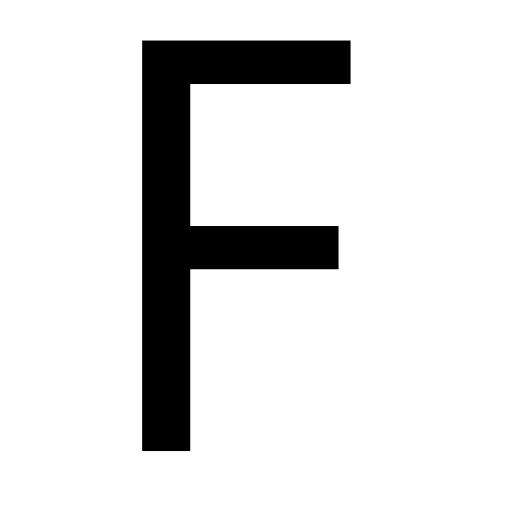
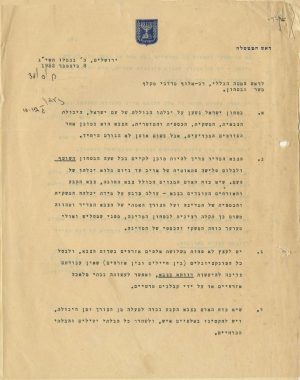 David Ben-Gurion Rare and Important signed Letter to IDF Chief of Staff Mordechai Makleff, December 1952
David Ben-Gurion Rare and Important signed Letter to IDF Chief of Staff Mordechai Makleff, December 1952
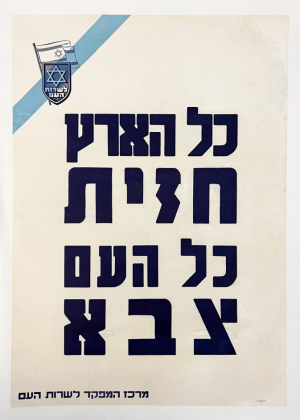 Israel's Independence War Extremely Rare Poster "All of the land is the front, All of our people are the army", 1948
Israel's Independence War Extremely Rare Poster "All of the land is the front, All of our people are the army", 1948
